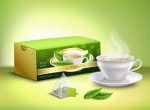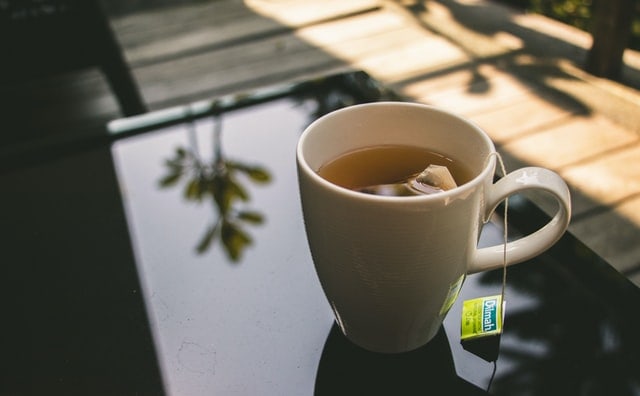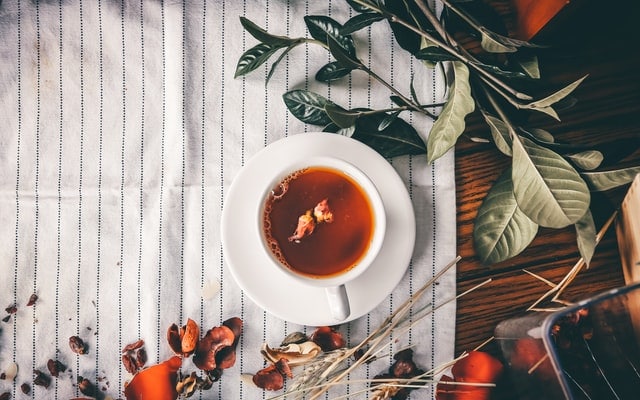
The average tea consumer is taking a greater interest in the blend that they drink. With more information available to them than ever before, they are becoming rather discerning about their tea. Thus, if you are a reseller or running a café or similar business, you may need to buy tea for a specific clientele.
One of your more common requests may be for Ceylon wholesale tea. Its unique tea and taste has made it popular across many a tea enthusiast. If you wish to buy this kind of tea in bulk, then you are going to need to know everything that you can about the tea and the processes involved with it:
Contents
Before attempting to make a purchase, you have to appreciate what Ceylon tea actually is. Traditionally, this term has reserved for tea that is grown in the highlands of Sri Lanka. These days, though, it is used to describe tea that is grown on any part of the island.
Ceylon tea is derived from the Camellia sinensis plant. As a result, you can find green, white, black, and other versions. Black tea is one of the more commonly sourced kinds of tea in Sri Lanka, though.
This kind of tea can vary quite a bit in flavor. However, the general consensus is that Ceylon tea has a bold and brisk flavor. It boasts medium to full tannins and can have hints of spice, cinnamon, or chocolate.

If you are planning on buying Ceylon tea in bulk, you are at an advantage. The country and associated suppliers are no strangers to exporting tea in large quantities. In 2019 alone, tea exports totaled 292.6 million kilograms (3.3 million tons).
Most of this was black tea and about 2.6 million kilograms (almost 3000 tons) were green tea. What this means for resellers is that there are plenty of market opportunities. Best of all, many of these suppliers are willing to work with smaller resellers.
Tea can differ in taste and aroma depending on the climate and terrain that it is grown in. As such, Ceylon teas are often distinguished according to the elevation at which they are cultivated. You need to appreciate the differences between each type if you want to cater to clientele that is particular about various flavor profiles.
The types of tea can be classified as following:
These are grown in the plains and foothills of Sri Lanka. As such, they can be grown anywhere from sea level to an elevation of 2000 feet (610m). The leaves here tend to be larger, but wirier in appearance. When brewed, they produce hearty and full-bodied cups of tea that are best served with milk and often sugar as well.
Here, the teas can be grown from 2000 feet (610m) to 4000 feet (1220m). You may find that these teas produce medium to full bodied brews. At the same time, there will be brisk fruity notes, particularly citrusy ones. These midland teas have a well-balanced astringency.
This refers to any tea that is grown at an elevation above 4000 feet (1220m). These tea leaves also tend to be rather prized. And, to a certain extent, they do bear a resemblance to the Darjeeling teas grown in India. The main difference is that Ceylonese teas have stronger notes of citrus. The highland teas have golden liquors and sweet aromas.
Since Ceylon tea is grown largely for export, there are various kinds of tea blends to consider. These can range from the more common English breakfast tea all the way to something more decadent like silver tipped teas.
It should also be noted that tea is grown on very specific parts of the island. These are known as “agro-climatic” regions. However, these areas may be known more commonly as districts instead. The seven tea growing districts are – Nuwara Eliya, Dimbula, Uva, Uda Pussellawa, Kandy, Ruhuna, and Sabaragamuwa.
When sourcing your tea, you should be aware of the various districts. This is because manufacturers can’t simply stamp a tea as being from a particular district. Rather, the teas have to undergo certification for district appellation by the Sri Lanka Tea Board. As such, they have to meet the criteria for the standards set by that district.

These days, consumers are becoming more and more concerned with tea quality. Thus, it is important to appreciate the different grades of tea produced by the Ceylon tea industry.
The two main categories of Ceylon tea is orthodox tea and CTC (crush-tear-curl) tea. In general, orthodox teas do tend to be of a higher quality, although there are different grades for this kind of tea as well. CTC Ceylon tea is traditionally used in lower-grade tea bags and some local loose teas.
The grading system for Ceylon teas are as follows, in order of quality – highest to lowest:
Related Articles
Orange Pekoe Tea - Top of The Rankings?
Of course, certifying quality is an entirely different matter. The Sri Lanka Standards Institution and the Sri Lanka Tea Board has come up with a Product Certification Scheme to better ensure quality levels of black tea.
You should be aware of the fact that tea producers or manufacturers aren't legally required to be a part of this scheme. Thus, looking for manufacturers that do offer this certification can help you provide a better tea product to your consumers.
One way to know if a manufacturer is producing good quality tea is to pay attention to these specifications:
Related Articles
The Art of Black Tea What You Need to Know About the Global Superstar
Buying in Bulk: What You Need to Know About Wholesale Tea
Factors like quality are fairly obvious when it comes to selecting a supplier. However, here are some other elements that you should consider when trying to narrow down your list:
If a tea supplier truly believes in their product, then they will be willing to ship a sample for you. Therefore, always go with a supplier who will offer you samples. This is quite helpful if you haven’t quite decided on the teas that you would like to stock up on.
It should be noted that not all suppliers will offer free samples. You will probably have to pay a small fee for the teas, but this should provide you with an opportunity to discern the kind of quality that you are paying for.
Needless to say, fresh tea tastes best. Thus, it is important to find a supplier that will ship the tea to you promptly when it is processed and packaged. Until the tea is shipped to you, it should be packaged and stored in a manner that will retain freshness. The tea leaves should also be kept away from direct sunlight.
Always check the tea leaves for freshness. Fresh tea leaves will have some weight to them and won’t appear desiccated. At the same time, the leaves will have a prominent aroma and flavor when brewed.
Organic tea growers are becoming more commonplace in Sri Lanka. However, there are more non-organic growers still in play. Now, non-organic tea isn't necessarily worse or unhealthier than organic teas. In fact, most people have been enjoying non-organic tea for centuries.
Nevertheless, you should consider your consumer base. If they are more oriented towards organic options, then look for a supplier that will meet with your requirements. Make sure that you receive some sort of certification to ensure that the tea is actually organic.
A number of suppliers will package your tea leaves for you. Now, this isn't just in the traditional sense, but rather, you can find suppliers who will provide you with tea leaves, smaller boxes, and more. Therefore, selecting one who can meet your preferred packaging standards can save you a great deal of hassle.
Are you planning to sell the tea under your own name? If so, you should look into suppliers that offer private label options. This way, your brand can take front and center on the packaging.
However, make it a point to read the terms and conditions associated with any private label claims.
Each supplier has their own stipulations for private labels. Some may want their blend credited, while others will hand over complete control to you. Select the option that is most suitable to you and your brand.
These are the top things to keep in mind when buying Ceylon tea wholesale. Now that you are aware of these points, you will find it far easier to stock up on Ceylon tea in bulk form.
